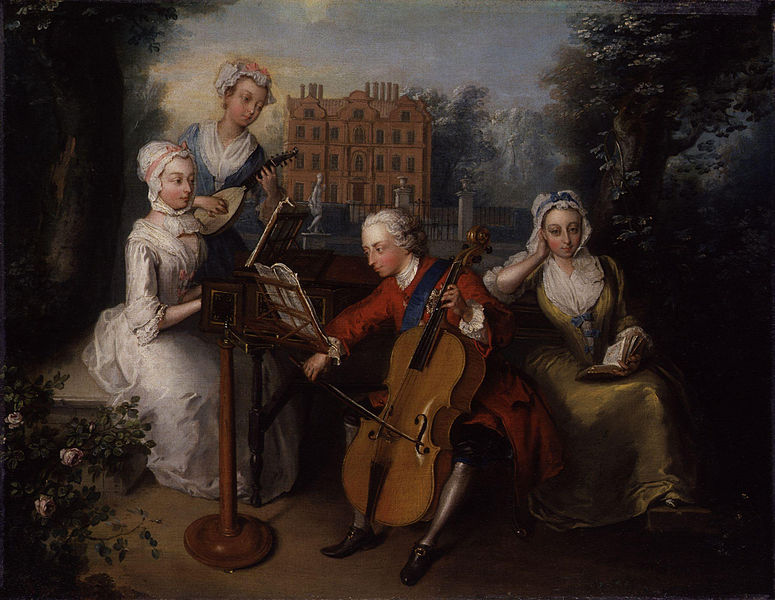I tried to make a list of the different representation that I saw in the National Portrait Gallery, but it pretty quickly devolved into the terrifying-pasty-rich-people-with-deformed-hands section and then insane-facial-expression-with-no-explanation section. I assumed coming in that the paintings in the older section would all be rich white people, so I wasn’t actually as upset about the lack of diversity as I normally would have been. (I actually read on the plaque next to Elizabeth that while paleness was in fashion for some of the period, other pale skinned depictions could be attributed to the fact that the red paint used to color cheeks fades over time. This doesn’t really explain why there are no other races represented, but it does explain why everyone looked like they were characters in a Tim Burton film).
Most of the paintings I took an interest in were monarchs, artists’ self-portraits, or famous historical figures. The modern section was a lot more exciting to me because I could actually tell some of the faces apart. I especially liked Maggi Hambling’s self-portrait (the woman with three arms) and the sculpture of Richard Rogers by Paolozzi (the head with bolts going through it and a deformed eye) because I think weirdness naturally lends itself to art. I tried to spend more time in the old-rich-white-people section, though, because I don’t think I’ve ever really given them enough credit. They all have the same hair and creepy elongated claw fingers, but their facial expressions, gestures, and other objects that appeared in the picture were a lot more telling than the austere impressive gentleman paintings that I usually see in textbooks I gravitated toward the paintings of the women, and it seemed like behind their organ cruncher outfits, they had a sense of humor that went over the heads of other people in the paintings. The portrait of Selina Hastings depicts her holding her temple like she has a giant migraine and pursing her lips in such a way that she might be contemplative, or she might be about to roll her eyes.
The painting I finally chose was another example of what I felt was an understated bond between exasperated women. Frederick Prince of Wales and his Sisters by Philip Mercier (1733) depicts Prince Frederick playing his cello accompanied by two sisters playing piano and mandora and the other reading Milton.
Frederick is wearing red so the viewer’s eye goes to him immediately. He’s really engrossed in the music, leaning forward and wide-eyed. Anne and Caroline (the two sisters playing instruments) both look mellow enough, but upon closer inspection a little bored. Amelia (on the right) is my favorite. She’s the only one that looks right at the viewer, leaning her face in her hand like a 9th grader during a biology lecture and she looks completely exasperated. Frederick has no clue.
I know I’m romanticizing it a bit, but everyone either romanticizes art or deconstructs it until it’s ugly. So I’m going to romanticize it. The women in many of the paintings I saw, especially this one, are posed in such a way that no one can accuse them of anything, but they are mocking society. They look just serious enough that the eye rolling is overlooked by anyone that isn’t in on the joke. It’s a subtle art that seems to appear in groups with less power of being able to say something without ever saying anything. That’s why I wasn’t irritated that there was really no diversity represented in this time period. I think some of the subjects of the paintings know it (yes, I know I’m stretching it a lot, but these exasperated women really were all over gallery). Art enthusiast everywhere speculate about Mona Lisa’s secret chalking it up to a love affair or contemplation about the universe, but I think it’s the recognition that someone is full of it.
